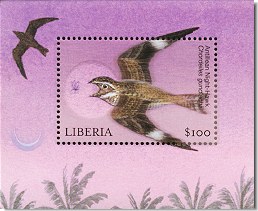The current population size for Common Nighthawks Chordeiles minor in Canada is estimated at 400,000 breeding adults. In Canada, data from the Breeding Bird Survey (BBS), indicate a significant long-term (i.e. 1968-2005) decline of 4.2% per year. In the most recent 10 year period (1995-2005), BBS data show a significant decline of 6.6% per year. This corresponds to a 49.5% decrease in the population. While there are no specific studies on the subject, the decline of the Common Nighthawk may be partly related to a general decline in insect populations in both the breeding and wintering grounds, due to large-scale insecticide use since the mid 1900s.
For example, it has been assumed that mosquito control programs in most urban areas in North America are probably responsible for the decrease in several species of aerial insectivores such as the Common Nighthawk. Similarly, the decline in the Eurasian Nightjar (Caprimulgus europaeus) is believed to be due in part to the decrease in insect populations from large-scale pesticide spraying programs in Europe.
Source:
COSEWIC Status Report on the Common Nighthawk Chordeiles minor prepared for the COMMITTEE ON THE STATUS OF ENDANGERED WILDLIFE IN CANADA, February 2007 (attached)

- Login om te reageren
